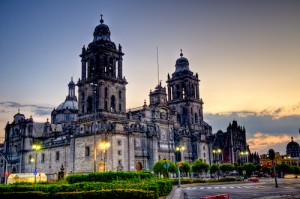Top Dialects of the Spanish Language
Spanish is the language with the second-most native speakers in the world, with a whopping 450 million who speak Spanish as their first language. In addition to that number, there are hundreds of millions more who speak Spanish as a non-native language. In addition to having a large population of native speakers, Spanish is widespread geographically, being spoken officially in countries on four continents. As such, its dialectical variation is significant. Here are some of the most common Spanish dialects.
Image via Francisco Diez / Wikipedia
1. Latin America
The Spanish language originated in Spain. Nowadays, however, the majority of Spanish speakers hail from Latin America — Mexico alone has almost three times as many Spanish speakers as Spain. Latin American Spanish is a blanket term that refers to many Spanish-speaking countries in North and South America. Of course, each of these countries has its own subdialect and particular vernacular, as well.
There are some important differences between the form of Spanish that is spoken in Latin America compared to Spain. For example, the second-person plural pronoun (“y’all” or “you guys” in English) is vosotros in Spain, but is ustedes in Latin America. These different pronouns also come with their own unique set of conjugations.
2. Castilian
Spanish: it’s where it all began. Spain is home to some 45 million Spanish speakers, most of whom use the Castilian dialect. The Castilian dialect is notable for several reasons. First, as noted above, it uses the pronoun vosotros instead of ustedes. In addition, its accent is distinctive: famously, the letters “c” and “z” are often pronounced like a “th” sound. Hearing this “th” sound is a dead giveaway that a Spanish speaker is from Spain (or at least learned the Castilian dialect).
How good is your Spanish? Find out by taking our free online Spanish level test!
3. Rioplatense
Argentina and Uruguay are part of Latin America, but their dialect is so distinct from that of other Latin American countries that it merits a separate mention. Indeed, the Rioplatense dialect differs from other Latin American dialects even in its use of pronouns: the second-person singular pronoun (“you”) is vos in the Rioplatense dialect, whereas it’s tú in the rest of the Spanish-speaking world.
The Rioplatense dialect also features a distinctive pronunciation. Most notably, the sounds y and ll — which usually sound like the letters “y” or “j” in English — are pronounced as a “sh” sound, like in the word “sheep”.
4. Andalusian
Spoken in the Andalusia region of Spain, the Andalusian dialect is the second-most spoken dialect in Europe, after the Castilian dialect. Andalusian Spanish shares a lot of common features with Castilian Spanish, such as the use of the pronoun vosotros. The Andalusian dialect is also known for “eating” the letter “d”, so words like helado (ice cream) are pronounced more like helao.

Image via Pixabay
5. Caribbean
The Caribbean Spanish dialect is used in countries like Cuba, Puerto Rico, and the Dominican Republic. In the English-speaking world, the Caribbean Spanish dialect might be familiar due to the popularity of singers and rappers, such as Pitbull and Daddy Yankee, who use the dialect. In the Caribbean Spanish dialect, speakers are known to omit the letters “s” and “d” when they come at the end of a word.
After English, Spanish is the second-most studied language in the world. And it’s clear why this is the case: speaking Spanish enables you to connect with millions of people from diverse cultures and backgrounds. But navigating the intricacies of Spanish grammar can be challenging for native English speakers, so if you want to learn Spanish, you should consider taking personalized courses from a qualified, native Spanish speaker. Send a quick inquiry our way to find out more about how we can help you master Spanish.



